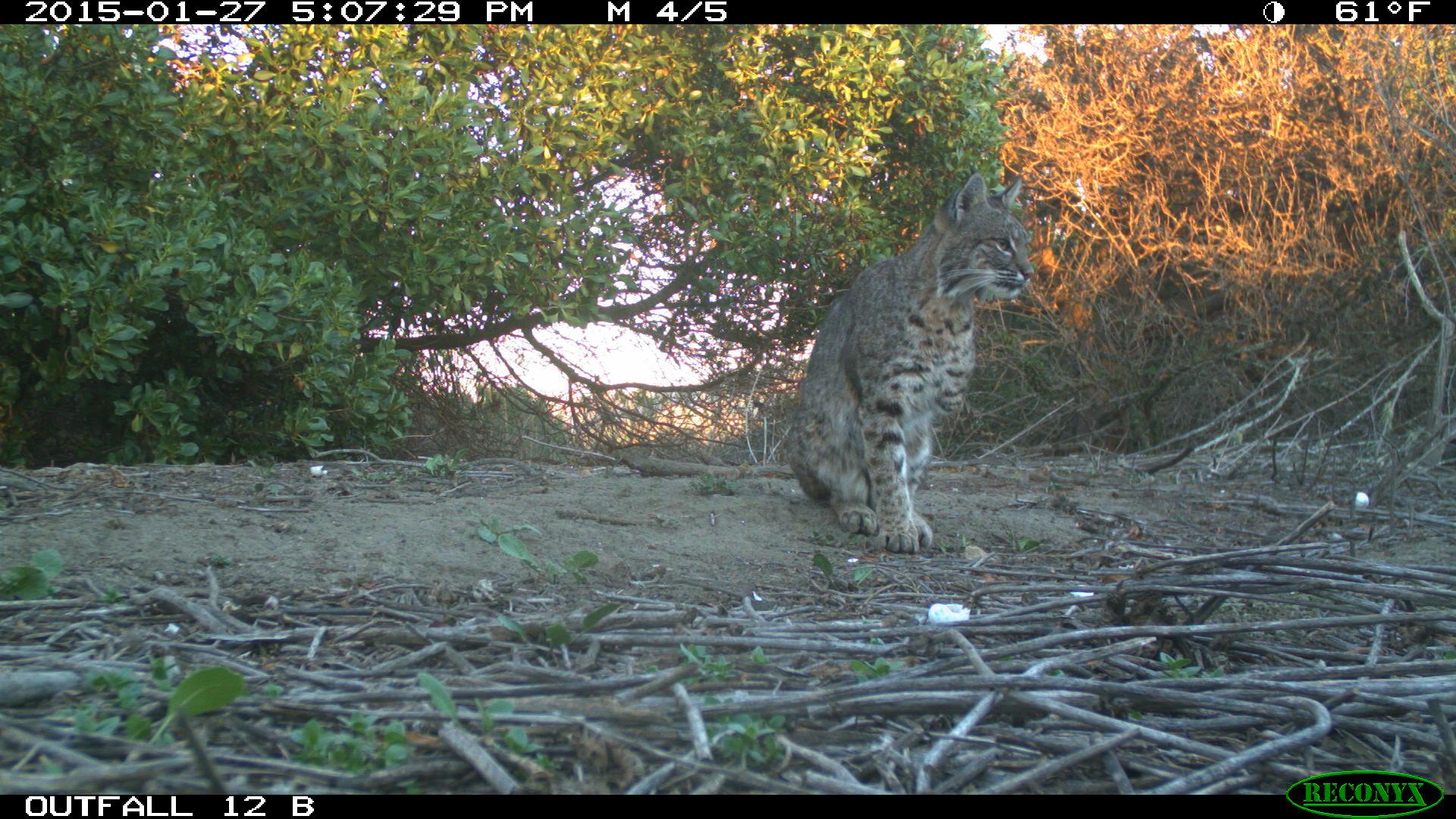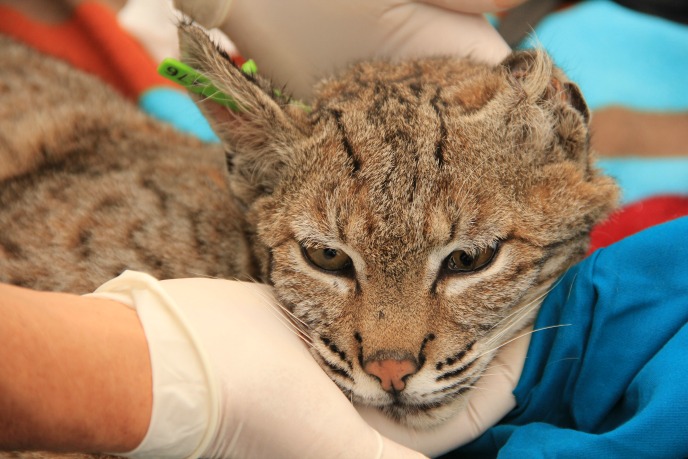 B-337 caught on camera in January 2015. | Photo: National Park Service
B-337 caught on camera in January 2015. | Photo: National Park ServiceEventually, she landed in one of our cage traps, allowing biologists to take a closer look. It's not clear whether the missing leg is a birth defect or an early-life injury. But B-337, as she's called, doesn't seem to let it get in her way, as the above video shows.
"Bobcats catch live prey, so that means she's managing to hunt with one front leg--and doing it well enough to feed herself and her kitten," says biologist Joanne Moriarty.
That kitten, coincidentally, ended up in one of our cages a few days prior to his mother. While he, identified as B-336, doesn't have a missing leg, he is missing one of his ears. Again, Moriarty is unsure why.
 B-336 | Photo: National Park Service
B-336 | Photo: National Park ServiceDespite these deformities on top of the usual challenges that wildlife face in the Santa Monica Mountains (roads, rat poison, being eaten by other animals, etc), they appear to be surviving just fine. The only notable difference between these two and other area bobcats is their home range. "It appears to be on the smaller end of normal for a female bobcat," she noted. "Based on our long term study of local bobcats since 1996, females average a range of two to three square kilometers [or .75 to 1.15 square miles]. I'm not seeing it that big with the preliminary data gathered so far."
With a collar now tracking B-337 and blood samples of her and the kitten being analyzed, Moriarty hopes to learn more. When she does, we'll report back here.
